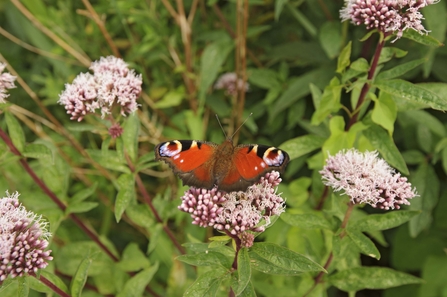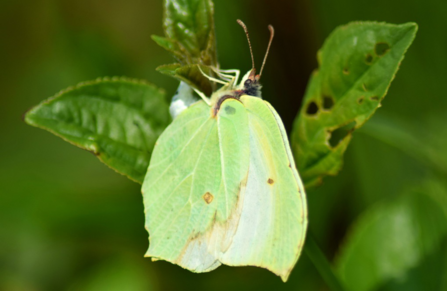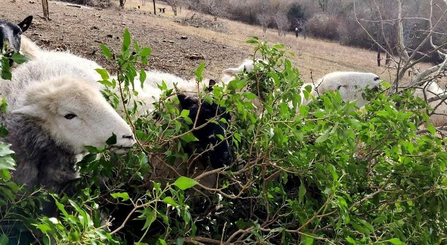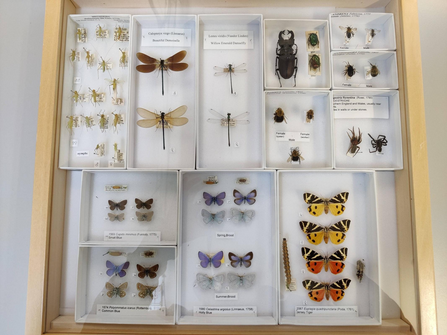Butterflies are flying invertebrates from the order Lepidoptera meaning "scaly wings" in greek. They are often characterised by their large, vibrant wings, as well as clubbed antennae which they use to detect plants that are producing pollen. Only 57 native species and 2 long-distance migrants are in the UK - this is only a small fraction of the 17500 species in the world! Despite the lack of diversity, you can still expect to see a decent number of butterflies with interesting patterns and colours. Phenotypic variations evolved as a means to attract potential mates or as camouflage to reduce predation risk. Butterflies are also amazing pollinators! As they travel from flower to flower, they also pollinate them, allowing them to produce seed or fruit. Butterflies are therefore excellent indicators of healthy ecosystems. Their sensitivity to environmental conditions makes them vulnerable to climate change, and as such, their populations have declined in the past few decades.

Peacock ©Terry Whittaker/2020VISION
"A few precious moments spent watching a stunning Red Admiral or Peacock butterfly feeding amongst the flowers in my garden never fails to bring me great pleasure" - Sir David Attenborough
Simply going out and discovering butterflies can provide people with a precious time out from all stresses of life; be it relationships, exams or careers. Immersing yourself in nature can bring joy as well as help alleviate mental health issues. And guess what? You don't have to travel far at all.
Comma Butterfly at Walthamstow Wetlands
Here are a few species you may encounter:
Common brimstone (Gonepteryx rhamni) - Males are yellow upperwings with yellow-green underwings, whereas females are very pale green. They have strong veining on their wings which closely resembles leaves. Typically emerges in February. Can be found in scrubby grassland and woodland habitats.
Comma (Polygonia c-album) - They have ragged-edged wings. The underwing is smoky-brown with a distinctive white 'comma' mark, whereas the upperwing is orange-brown with dark markings. They start emerging in March and can be found in woodlands or wood edges.
Peacock (Aglais io) - Have distinctive eyespot patterns on their bright-red upperwings, evolved to confuse predators. The underwings are dark, resembling dead leaves. Typically emerges in March. Found in a range of habitats.

Brimstone butterfly credit Matthew Rich
I have been carrying out practical conservation tasks at nature reserves such as Hutchinson's Bank in Croydon. The aim of the Brilliant Butterflies project is to create and maintain chalk grassland habitats to conserve butterflies. An alarming statistic is that we've lost more than 80% of chalk grasslands since the 1945 due to land-use changes. This rare habitat supports wildflowers such as Kidney Vetch, the sole food plant for the nationally scarce small blue butterfly. Our team of trainees and volunteers have been busy clearing vegetation to prevent shrubs like Dogwood dominating the landscape during winter. This ensures the soil stays nutrient-deficient in time for spring. Luckily, we had some help from the Downlands Partnership and their hungry sheep. We even had the opportunity to visit their farm and learn about their use in conservation grazing!

Sheep grazing at Hutchinson's Bank credit Alan Yap
Surveys are carried out regularly to track the progress of chalk grassland habitat restoration. Interestingly, the Natural History Museum is using environmental DNA (eDNA) to gain a more reliable and full picture of invertebrate life that can be found on the sites. This data can be used to analyse the effectiveness of current strategies at Hutchinson's Bank (as well as other South London sites) and aid future conservation planning.

Invertebrate case Natural History Museum credit Alan Yap
